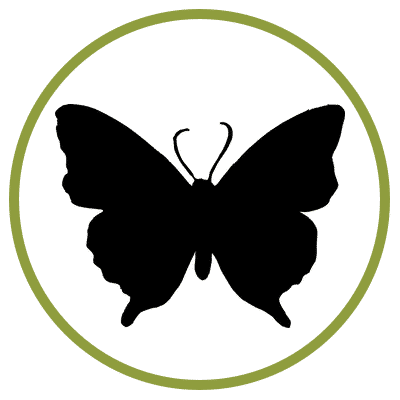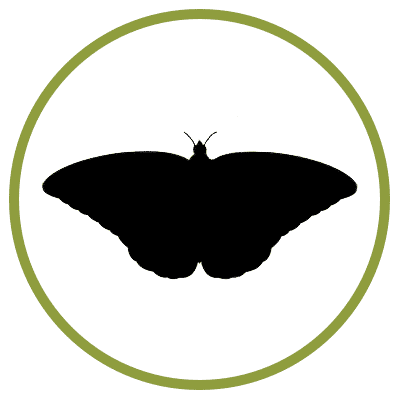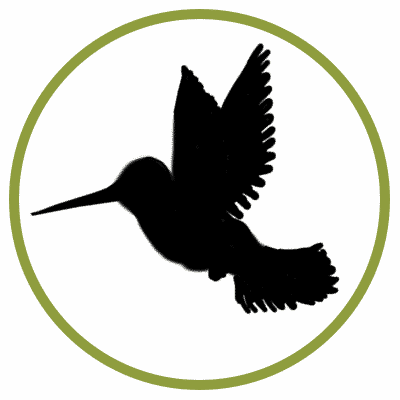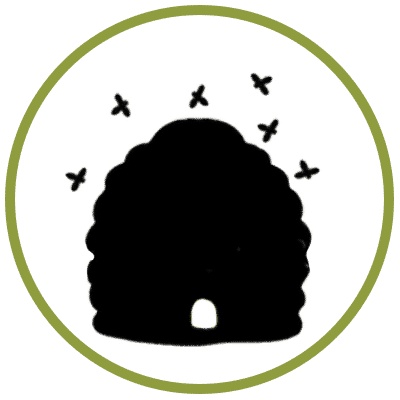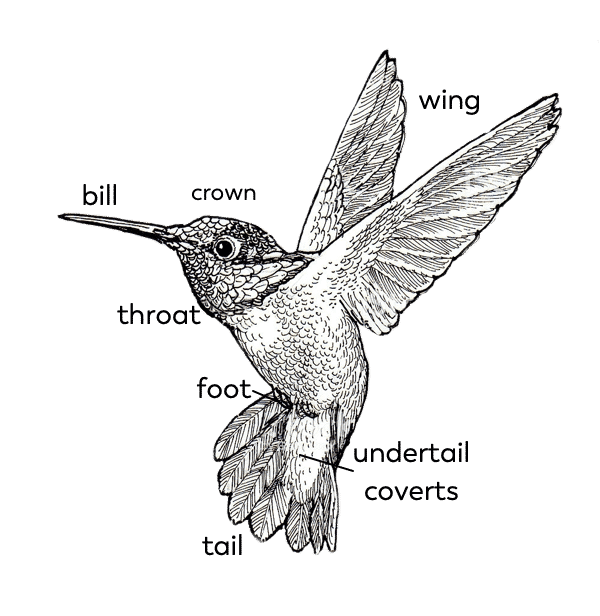explore
Structure & Function
How are these animals built to pollinate?
As we learned in the UNCOVER section, all of the pollinator species we are helping in this Quest have similar traits that make them excellent at pollinating flowers. They are small, they fly, they eat nectar, and pollen sticks to their bodies. Each group of pollinators also has unique structures that help them pollinate.
On this page, we'll EXPLORE these structures and their functions for each pollinator group. Understanding them can help you help your pollinator species. Find your species' pollinator group, read about its unique structures and functions, and respond to the Questions to Consider.
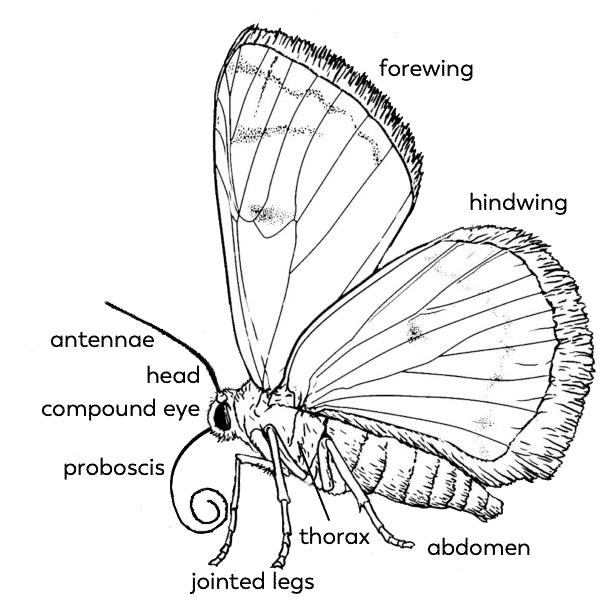
Butterflies, Skippers, and Moths
Butterflies, skippers, and moths are flying insects with two pairs of large wings that vary in color and pattern from species to species. Like all insects, they have six jointed legs, three body segments, a pair of antennae, compound eyes, and an exoskeleton or hard shell. The three parts of their body are the head, the thorax (the chest), and the abdomen (the tail end).
The butterfly, skipper, and moth bodies are covered by tiny sensory hairs, and their four wings are covered with overlapping rows of tiny scales. Their wings and their six legs are attached to their thorax. The thorax contains the muscles that make their legs and wings move.
Did you know that butterflies, skippers, and moths don't have a mouth?! Instead, they have a proboscis, which is like a long straw that they drink nectar through.
Differences between the three
Butterflies, skippers, and moths are all part of the same family, which means they are very similar, and there are just a few physical characteristics that distinguish them from each other. Skippers and butterflies tend to be more colorful and feed primarily during the day, while moths are generally less colorful and are more active at night. At rest, butterflies and skippers hold their wings up or out, while moth wings fold up flat along their body. Finally, the shapes of their antennae are different, as shown below.
Questions to Consider:
- What are the physical structures of butterflies, skippers, and moths that help them pollinate flowers?
- How will understanding their structure and function affect how you help them?
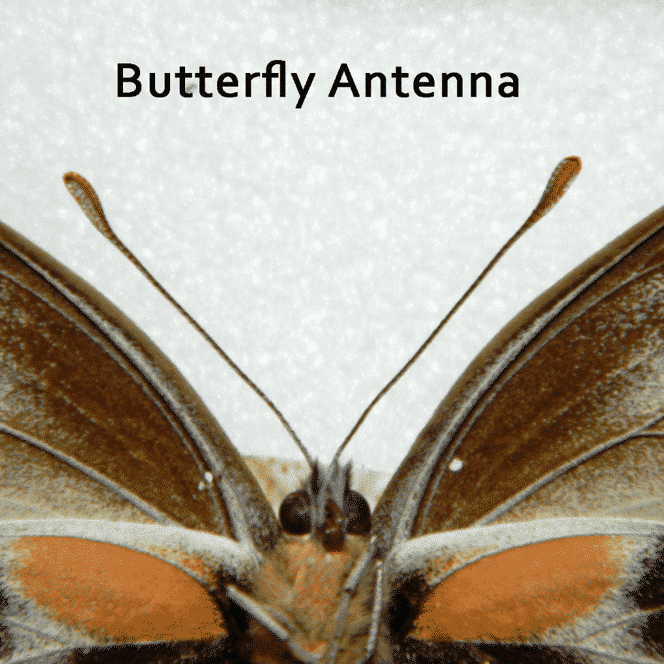
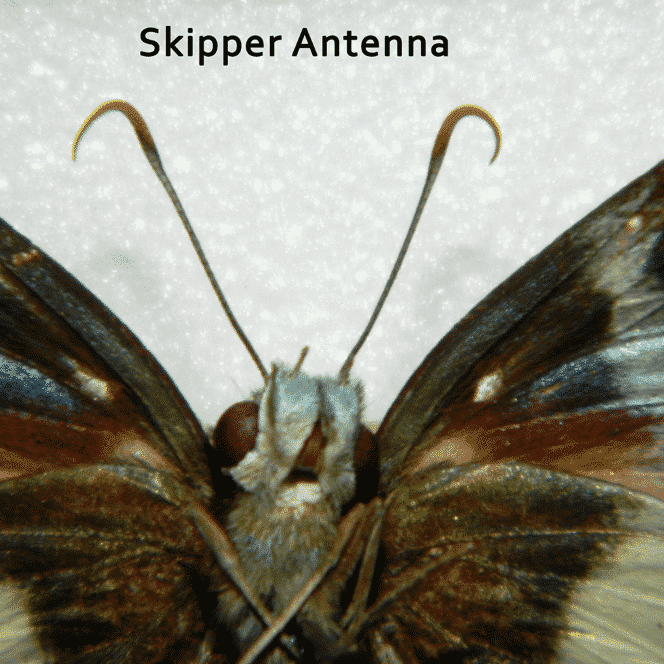
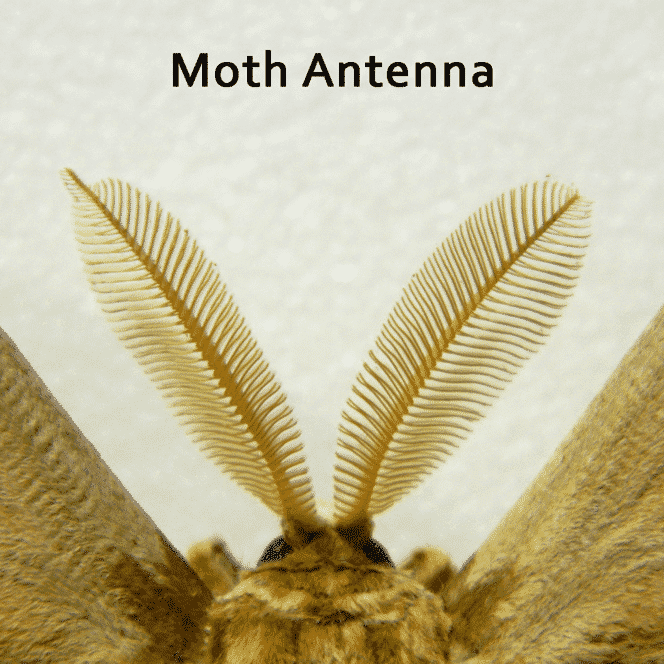
images from Australian Butterfly Sanctuary
Hummingbirds
Hummingbirds might be among the smallest of birds, but that doesn't mean they aren't pretty amazing. Most hummingbird species are less than 5 inches long and only weigh an average of 3 grams (for comparison, a US nickel weighs 4.5 grams)! The wings of a hummingbird are built to allow them to fly forward, backwards, and side-to-side. Rather than beating up and down, they rotate their wings in a figure-eight at high speeds! In fact, hummingbirds get their name from the humming sound created by their wings during these rapid movements. Hummingbirds beat their wings an average 70 times PER SECOND (up to 200 times per second when they are diving).
Relative to their tiny little bodies, their beaks, hearts, brains, and eyes are huge! Their long beak allows them to reach deep down into flowers to drink the nectar. Their tongue is also quite long and is shaped like a W with little hairs on the end to help them get all the nectar. A hummingbird can lap up nectar at a rate of about 13 licks per second.
Their huge heart is built to keep up with their very fast wings, beating about 250 beats per minute at rest, and 1,260 beats per minute while flying. (For comparison, your heart is probably beating 70-100 times per minute while you are reading this). Hummingbirds also have one of the largest brains (for their size) among all species of birds, making them pretty smart. They use this brainpower to help them keep track of which flowers they have already visited, and which ones will probably have tasty nectar waiting for them. Their eyes are even bigger than their brains! They have very good vision that allows them to see a wide range around them, things that are far away, and even ultraviolet light.
Questions to Consider:
- What are the physical structures of hummingbirds that help them pollinate flowers?
- How will understanding their structure and function affect how you help them?
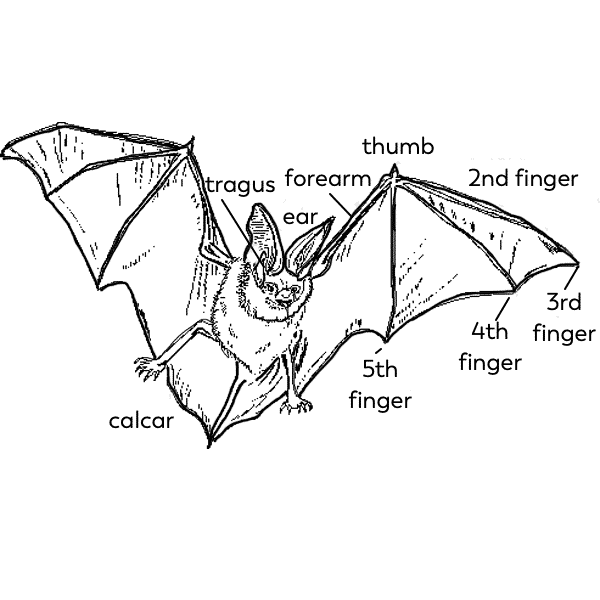
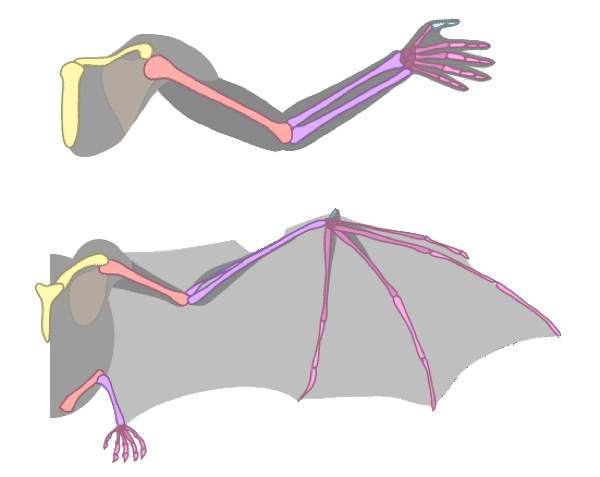
Bats
Bats are the only mammals with the ability to fly (though a few others can glide). Like all mammals, they have fur, they give birth to live babies, and they feed those babies milk. Bat wings, different than bird wings, are built and move more like human hands. The bones in their wings work like human fingers in a few ways: they are very flexible, and their first digit is a claw that acts like a thumb! Rather than feathers, bat wings are made up of stretchy webbing that is thin, flexible, and strong. Stretch out your hand and observe the web of skin between your index finger and thumb. That’s kind of what a bat’s wing feels like. A bat can flap its wings 17 times per second and reach speeds of almost 100 miles per hour!
Bats have very short legs with knees, just like ours. The claws on their feet are very strong, which allows them to hang upside down from rocks when they sleep. They also have special valves in their arteries to keep blood from rushing to their heads when they’re hanging upside down. If you had that kind of valve, you wouldn't feel such a head rush when hanging from the monkey bars on the playground!
Bats are nocturnal, which means they come out and feed at night. The species of bats that eat fruit and nectar have excellent vision and sense of smell. They use their eyes, ears, and their powerful sense of smell to find the strong-smelling flowers that holds the nectar they are wanting to drink.
The bodies of bats are covered in fur. Their fur is a great pollen transporter - pollen sticks to their fur when the bat rubs against a flower while eating, and then falls off when the bat visits another flower. Bats have long noses and tongues, and only a few small teeth, so that when they do get to a flower, they can pollinate it quickly. Pollination success!
Questions to Consider:
- What are the physical structures of bats that help them pollinate flowers?
- How will understanding their structure and function affect how you help them?
Bees
There are two kinds of bees we'll talk about in this Quest. Social bees live together in a colony or a nest and have a very organized social structure. Solitary bees live alone in small tunnels they make into nests. Their physical traits are very similar but their behavior and social traits are quite different!
All bees are insects and have the five characteristics common to most insects (but not all)!
- They have three main body parts - head, thorax, and abdomen
- They have a hard outer shell called an exoskeleton
- They have a pair of antennae attached to their head
- They have three pairs of legs
- They have two pairs of wings - forewings and hindwings
In addition to these traits, bees have other interesting characteristics that help them survive and thrive. Bees are covered with tiny sensitive hairs, giving them their fuzzy look. These hairs help the bee feel nearby objects, movements, and vibrations. They are also great pollen collectors! Some species of bees also have little basket-like structures on their legs that help collect and transport pollen while they are flying.
Bees have five eyes, which provides them with incredible vision! They have three simple eyes and two compound eyes. Each compound eye is an arrangement of hundreds of single eyes that lets the bee see in many directions at once. The compound eye can also see polarized light - something humans can't do.
Like the butterfly and moth, many bee species have a proboscis, or tube-shaped mouth part to help them sip up nectar. Bees also have jaws that allow them to bite invaders, to shape the wax of their honeycomb, and to eat "bee bread" - a mix of pollen and nectar. Some species of bees, mostly social bees, have a stinger on their tail end that helps them protect themselves and their colony from threats.
Questions to Consider:
- What are the physical structures of bees that help them pollinate flowers?
- How will understanding their structure and function affect how you help them?
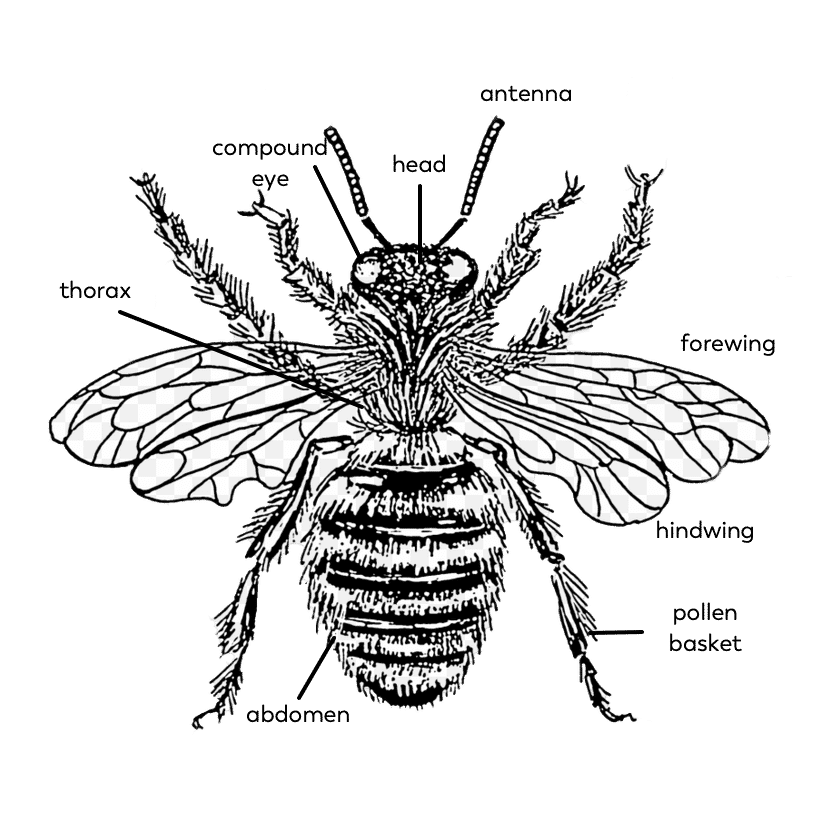
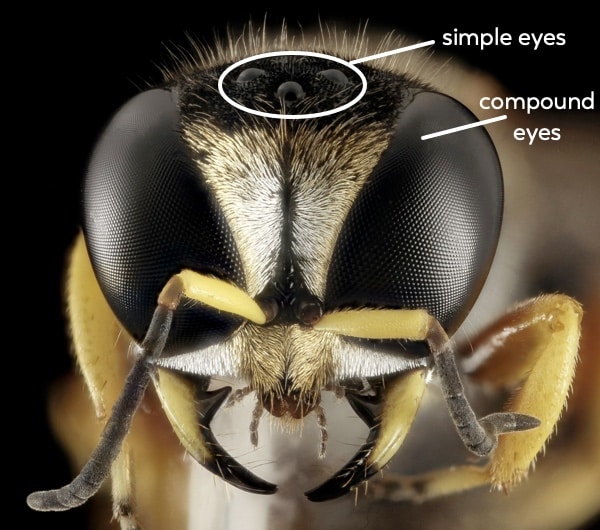
Curious to know more about the pollinator you want to help?
Go beyond this Quest page to explore more about the pollinator species group you have chosen to help.
- What are other physical structures of the flowering plants and pollinating animals in your species group that help them get food, grow, interact, and reproduce?
- How will understanding these other structures and functions affect how you help the species you've chosen?
Does your pollinator have special adaptations that help it survive & thrive?

